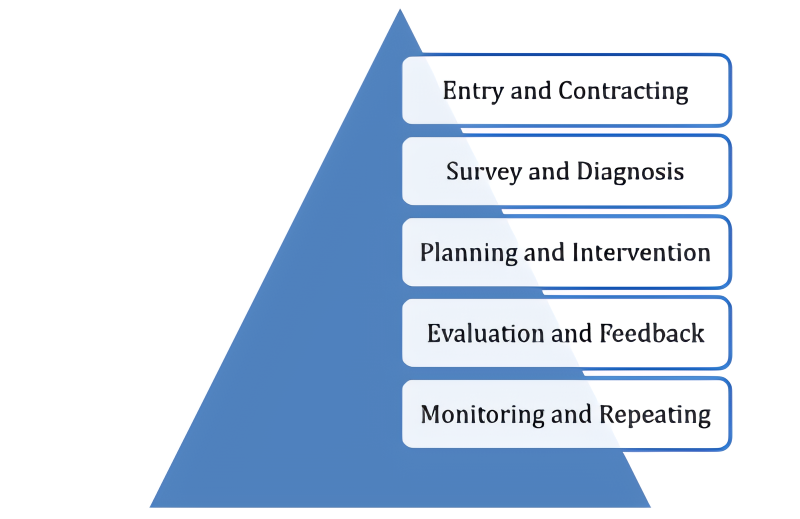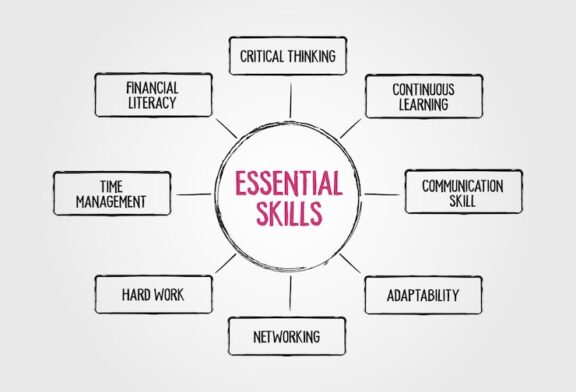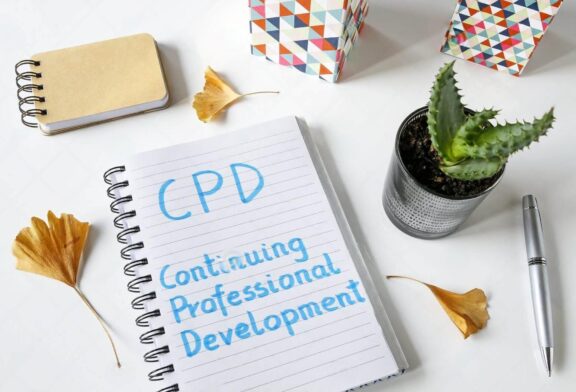Every business leader wants to build a thriving workplace and a business that is ready to face any challenge. However, this in itself is a challenge since the scope is broad and a lot of aspects need to be considered before any plan is created for a workplace. The solution is to opt for organisational development, a strategy that helps a business grow as a whole.
Among businesses that undergo change, only 34% of initiatives to drive said change are successful after implementation. This shows a huge room for improvement – a task that can be addressed with the help of proper strategies, meaningful insights, and relevant data.
All of these and more are covered under organisational development. Let’s take a look at what it is, its scope, and the impact it has on a business.
What Is Organisational Development?
In the ever-competitive and ever-evolving world of business, it is important for organisations to stay ahead of the curve. Organisational development (or organisation development) involves a systematic approach to drive business performance and adaptability, factoring in parameters such as the culture, values, operating procedures, strategies, and capabilities.
Thus, businesses that implement organisational development create plans and take up initiatives that support their growth, foster innovation, and create a healthy work culture. This is done through employee engagement programs, leadership development initiatives, and improving organisational processes.
The organisational development process involves the following steps:
- Identifying and evaluating the problem
- Evaluating the current scenario.
- Collecting and analysing all relevant data.
- Consulting the stakeholders regarding actions to be taken.
- Designing and implementing a suitable plan.
- Evaluating and monitoring the impact of the plan.
- Creating future plans by taking inputs from the key markers of the current plans.
89% believe that working on building the skill sets of an employee is important if an organisation wishes to stay competitive in the future. This makes learning and development a key part of organisational development.
The Purpose and Scope of Organisational Development
Businesses deploy organisational development to fulfill the following purposes:
- Increasing organisational efficiency.
- Making the business adaptable and resilient.
- Identifying and addressing issues in the business processes.
- Fostering a collaborative and positive work culture.
- Creating better processes, products, and services.
- Aligning the people with the organisational goals.
- Establishing a route for long-term sustainable success.
Further, the scope of work under organisational development covers the following key areas:
- Individual workers, their skills, roles, and performance.
- Workplace teams, their collaborative projects and performance.
- Leadership and management teams, and the way they maintain and oversee work.
- The Organisation, its structure, culture, systems, and overall efficacy.
- External environment, such as the market and economy.
People and Organisational Development: A Strategic Partnership
Organisational development is not a standalone process. For effective implementation, every member of the organisation, from regular employees to the leadership team, has to work together.
On the whole, this strategic partnership between people and organisational development includes:
- Strategic alignment of organisational tasks (such as HR practices) with the overall business strategy.
- Engaging in employee development and helping build their skills to equip them for the job role.
- Managing both internal and external change, ensuring smooth transitions.
- Creating a positive, collaborative, and productive work culture.
- Improving the performance of the organisation by improving that of the individuals.
- Managing and retaining the top talent and placing people in the right role.
- Fostering a workplace driven by innovation that adapts to market and technological advancements.
The 5 Key Stages of the Organisational Development Process
Organisational development is not a one-and-done process. Instead, it is iterative, where the feedback from every step is important in mapping out the next. Further, it adapts to challenges, refines strategies, and uses previous successes to build better strategies for continuous growth and improvement.

The five stages that organisational development goes through include:
1. Entry and Contracting
The first step is to identify what the organisation needs, setting out objectives, and creating a scope of work. This establishes clarity from the get-go and ensures that the practice aligns with the scope and desired outcome.
2. Survey and Diagnosis
In the next phase of organisational development, the current state of the organisation is evaluated using data from surveys, interviews, and general observations. From this information, both qualitative and quantitative insights are received that identify the root cause of organisational issues.
3. Planning and Intervention
Using the insights received, a clear and actionable plan of action is formulated. Key stakeholders are informed of their roles and the steps they need to take for effective interventions. Then the action plan is adopted by integrating it into the workflow. During the implementation, it is important to monitor progress, watch out for challenges, and adjust the strategy as necessary.
4. Evaluation and Feedback
Based on the goals and metrics set out when designing the action plan for organisational development, the impact of the action plan is evaluated. Based on this, feedback is sent, which acts as the basis on which alterations are made to the plan.
5. Monitoring and Repeating
Last but not least, it is important to routinely monitor implemented strategies, check progress, and identify challenges. Based on this, the impact of the strategies can be assessed, and the strategy in question can be further refined. Further, the findings can be used to create new organisation development strategies in the future.
Why Organisational Development Matters
Among businesses in the private sector, 37% stress on reaching growth targets, 26% work on increasing their productivity, and 24% look towards cutting back on costs.
Effective organisational development makes a business efficient, competitive, and ready to tackle any challenges. The reasons why organisational development matters include:
- Offers organisations the ability to transition smoothly through both planned and sudden changes.
- Improves the performance of the organisation as a whole, manages inefficiencies, and boosts morale
- Creates a positive work environment that attracts and retains the top talent in the industry.
- Improves operational efficiency, reducing operational and overhead costs.
- Improving operational efficiency and quality by enabling process integration.
- Increases process sustainability with data-driven planning and growth.
- Fosters continuous learning within the organisation.
- Builds capacity and positions the business for future growth and expansion.
What are the Core Functions of Organisational Development?
According to CIPD, 67% of the leadership feel that L&D strategies are aligned with the organisation’s goals. Further, only 41% believe that workplaces have an environment conducive to learning. With organisational development, cultivating skills among employees can be addressed.
As a business tool, organisational development addresses the following core functions:
Diagnosing Organisational Needs
The requirements of one organisation vary from the other. For effective organisational development, it is important to identify exactly what your organisation needs, whether it is efficient processes, better operational practices, or a streamlined workforce management.
Designing and Implementing Change
On the basis of the specific requirements of the organisation, an action plan needs to be developed. This will address all challenges that the organisation is facing, mapping out a route to resolve them. Then, speak to the stakeholders, fine-tune the plan, and implement all necessary changes.
Talent, Leadership, and Culture Development
By investing in both people and processes, organisation development helps create a positive workplace that nurtures talent, cultivates leadership, and makes employees feel valued. This, in turn, drives engagement and improves the performance of the workforce.
How Organisational Development Differs from Human Resource
Both organisational development and efficient human resources are key for running an organisation. However, they differ in their scope, target, and approach. At a glance, the key differences between Organisational Development and Human Resources can be laid out as follows:
| Features | Organisational Development | Human Resources |
| Focus | The organisation’s development as a whole, including systems and processes. | Individual employees, their roles, and related functions. |
| Scope | Strategic, systematic changes across the organisation. | Operation changes for better workforce management. |
| Approach and Timeline | Proactive and long-term. | Reactive and short-term. |
| Target Areas | Company culture, SOPs, structure, and business processes. | Recruitment, training, reviews/appraisals, compensation, etc. |
| Goal | Facilitating organisation development by making it efficient and adaptable. | Ensuring a smooth functioning workforce and legal compliance. |
| Examples | Implementing new SOPs to improve organisational processes. | Managing employee systems, performance reviews, payroll, etc. |
Table: Organisational Development versus Human Resources
CIPD and Organisational Development
CIPD explains organisational development as a systematic process that helps improve business performance and sustained growth. Further, CIPD recognises the following as the fundamental principles of organisational development:
- Getting the most value out of the available resources, whether it is a product or a service.
- Aligning the organisation’s work style and milestones to its long-term goals and purpose.
- Institutionalising ways that help ensure continuous development for the organisation.
- Improving the quality of collaborative work and group dynamics among the workforce.
Future Trends in Organisational Development
As organisations grow and the way business is conducted transforms, the following trends are expected to be observed in organisational development:
- Use of data-driven insights from digital platforms to identify gaps in the organisational process.
- Greater importance being given to having a work environment that is supportive, a proper work-life balance, and cultivating the skills of the employees.
- Greater diversity and inclusion in the workplace, offering equal opportunities to all.
- Hybrid work environments where employees join in from both remote and on-site jobs.
- Use of AI-aided systems to organise, automate, and facilitate data-driven decisions.
- Greater stress on collaborative work with the presence of diverse teams.
Implementing Organisational Development
Once you know how organisational development can increase the resilience and adaptability of your business, making it future-ready, it is important to go through the process itself. Use the above steps to identify what your organisation needs and create a plan accordingly to address all challenges.
Interested in improving your organisational processes? Undergo organisational development for your workplace.
Frequently Asked Questions
Are HRM Measures and Organisational Development Initiatives Truly Different?
Organisational development has a broader scope. However, its core functions often overlap with HRM, involving people-specific practices such as facilitating L&D, talent management, creating a collaborative work culture, etc.
What Counts for Organisational Development in HRM?
Employee wellness, engagement, learning, performance, productivity, retention, and more are organisational development tasks that fall under the umbrella of HRM.
What Are Some Common Overall Organisational Development Interventions?
Team building activities, leadership development, performance management for individuals, managing change, and improving process efficiency are some of the most common organisational development initiatives.
Does Organisational Development Have Limitations?
Implementation of organisational development can be resource-intensive, take time, have multiple levels of complexity with overlapping scopes, and even face resistance from the organisation. However, all of these are offset by the advantages that it offers.





